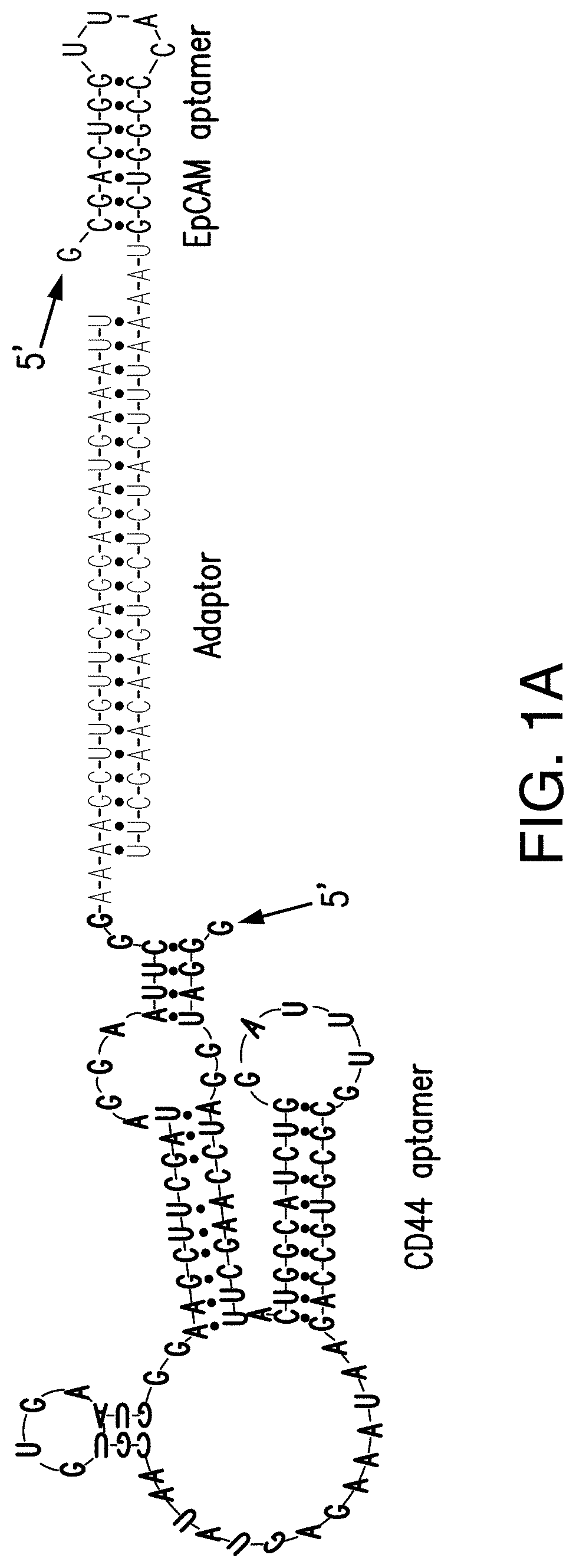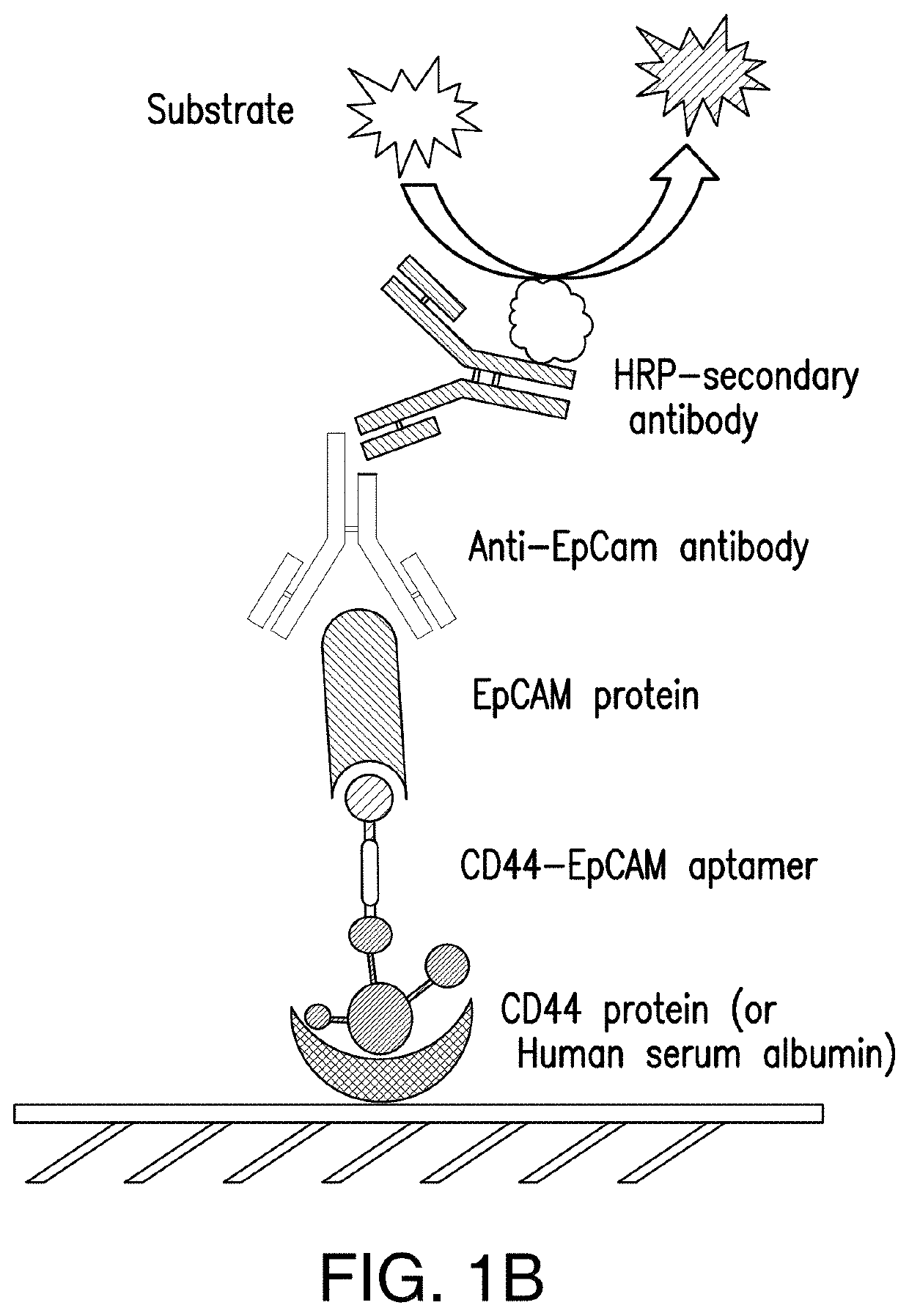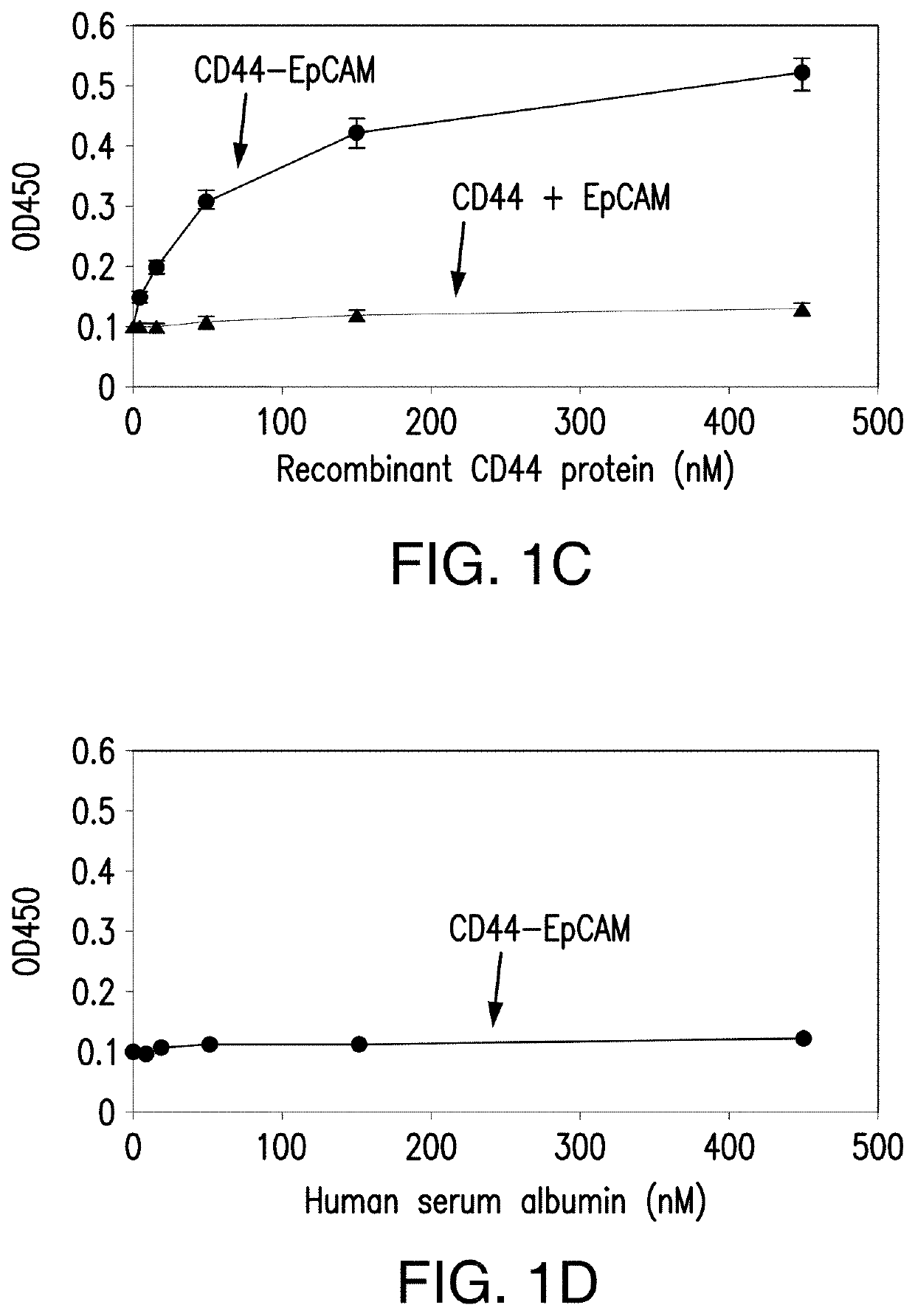Bispecific Aptamer for Treating Cancer
a technology of bispecific aptamers and cancer, which is applied in the field of nucleic acids for the treatment of cancer, can solve the problems of high immunogenicity of antibody-based bispecific molecules, difficult production, and unreported therapeutic effects of these two aptamers, so as to reduce renal filtration, improve circulation half-life, and inhibit ovarian cancer cell growth
- Summary
- Abstract
- Description
- Claims
- Application Information
AI Technical Summary
Benefits of technology
Problems solved by technology
Method used
Image
Examples
example 1
ion and Characterization of a Bispecific CD44-EpCAM Aptamer
[0102]Single CD44 aptamer (Ababnem, et al., Nucleic Acid Ther, 23:401-407 (2013)) is 90 nucleotides long while single EpCAM aptamer (Shigdar, et al., Cancer Sci, 102:991-998 (2011)) is much smaller and contains only 19 nucleotides (FIG. 1A). The utilization of EpCAM aptamer is expected to confront with the problem of short circulation life time because molecular weight of 6.5 Kd of this aptamer is much smaller than the molecular mass cutoff of 30-50 Kd for renal glomerulus (Healy et al., Pharm Res, 21_2234-2246 (2004)). To overcome this problem, single CD44 and EpCAM aptamers were fused together with a 23 bp double stranded RNA adaptor. 2-3 bases were purposely left unpaired between adaptor and aptamer in order to give each single aptamer spatial space to form a 3-D structure shown in FIG. 1A. The molecular weight of fused aptamer is 54.4 Kd, which is large enough to avoid rapid renal depletion. The fused aptamer is much sma...
example 2
ssion of CD44 and EpCAM in Ovarian Cancer Cell Lines and Cytotoxicity of Bispecific CD44-EpCAM Aptamer
[0105]To investigate the effect of bispecific CD44-EpCAM aptamer on ovarian cancer cell growth, the abundance of CD44 and EpCAM in a panel of ovarian cancer cell lines and human embryonic kidney HEK293T cell line was analyzed. Western blotting with the specific antibodies showed that CD44 was highly expressed in all ovarian cancer cell lines (OVCAR8, SKOV3, OCC1 and ES2) while little was seen in HEK293T cells (FIG. 2A). EpCAM was also expressed in all ovarian cancer cell lines and HEK293T cell line with highest expression detected in OVCAR8 cells (FIG. 2A).
[0106]The cytotoxicity of both single and bispecific CD44 and EpCAM aptamers on ovarian cancer cells was assessed by CCK-8 assay. Single EpCAM aptamer displayed little inhibitory effect at concentration <2 μM but was able to reduce 10-30% of cell viability at 4 μM in tested ovarian cancer cell lines (FIGS. 2B-2E). In contrast, sin...
example 3
bility of Bispecific CD44-EpCAM Aptamer
[0107]2′-fluoro-modified and unmodified CD44-EpCAM were incubated with 50% human serum at 37° C. for 2-24 h followed by agarose gel electrophoresis to reveal RNA integrity. As shown in FIGS. 3A & 3B, unmodified CD44-EpCAM was degraded as early as 2-h after treatment, and no aptamer bands appear in 24-h incubation time range. On the contrary, 2′-fluoro-modified CD44-EpCAM kept its integrity (tight band) without degradation for 6 h, and almost 45% of aptamer still remained at 24 h.
PUM
| Property | Measurement | Unit |
|---|---|---|
| molecular weight | aaaaa | aaaaa |
| temperature | aaaaa | aaaaa |
| temperature | aaaaa | aaaaa |
Abstract
Description
Claims
Application Information
 Login to View More
Login to View More - R&D
- Intellectual Property
- Life Sciences
- Materials
- Tech Scout
- Unparalleled Data Quality
- Higher Quality Content
- 60% Fewer Hallucinations
Browse by: Latest US Patents, China's latest patents, Technical Efficacy Thesaurus, Application Domain, Technology Topic, Popular Technical Reports.
© 2025 PatSnap. All rights reserved.Legal|Privacy policy|Modern Slavery Act Transparency Statement|Sitemap|About US| Contact US: help@patsnap.com



